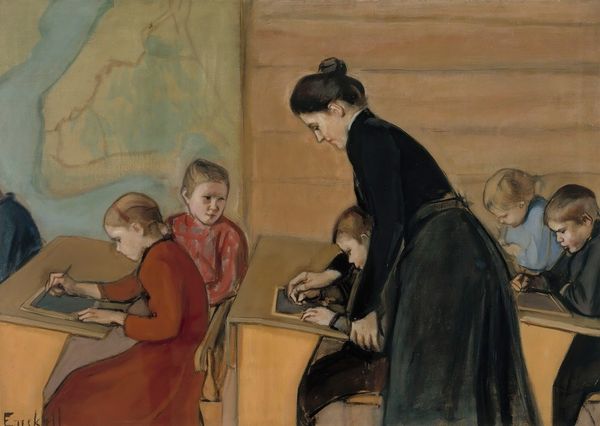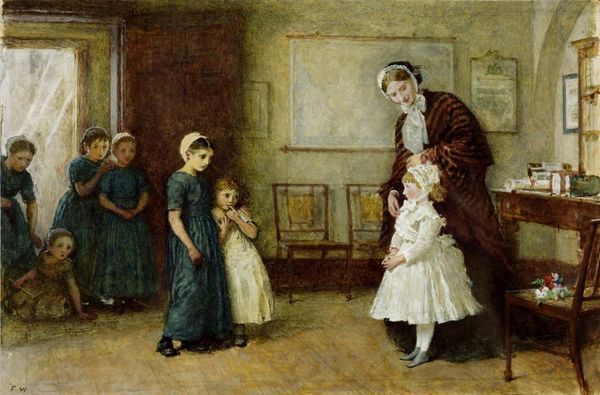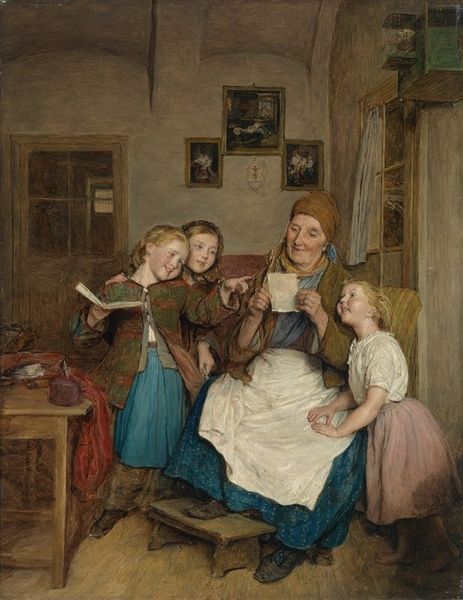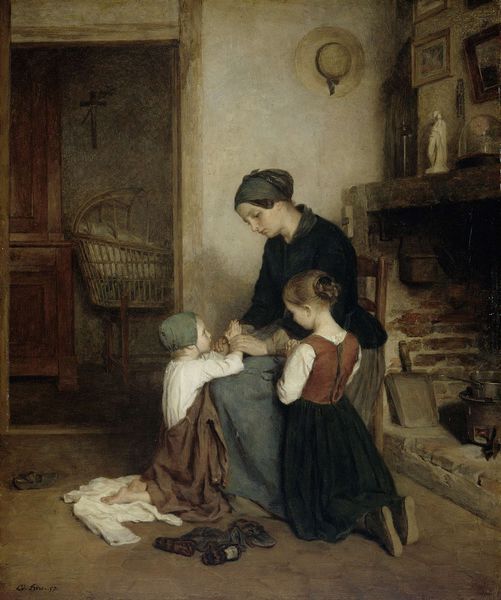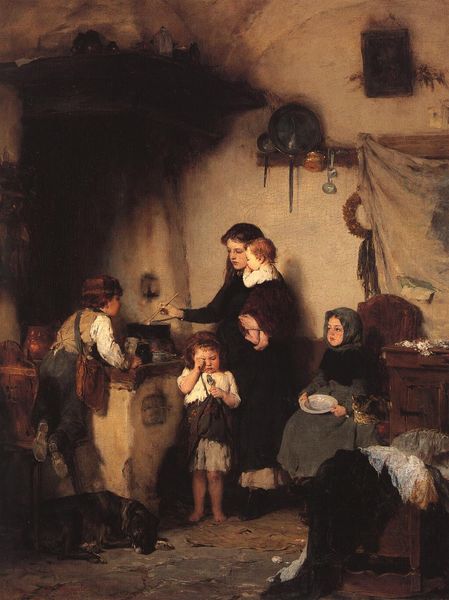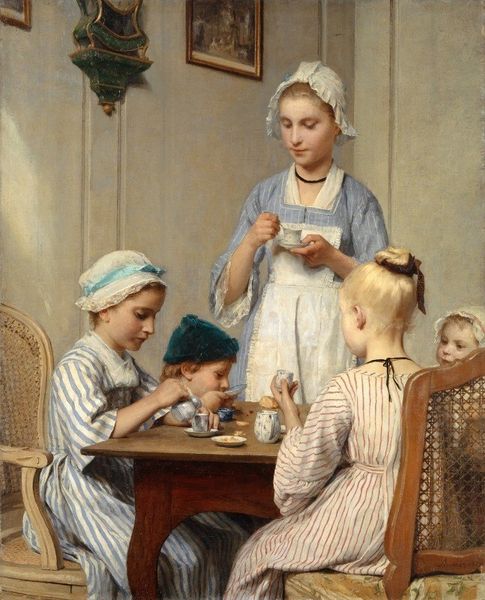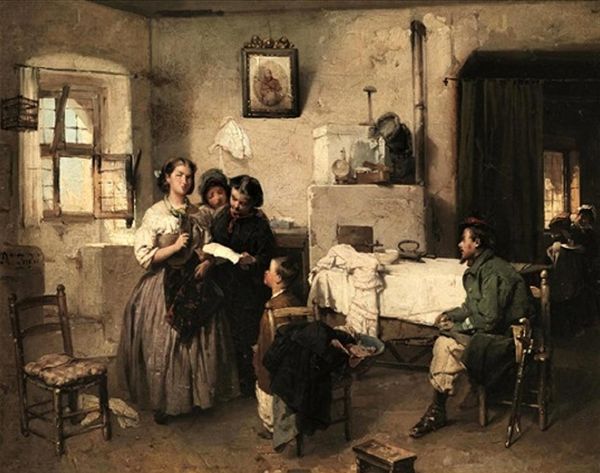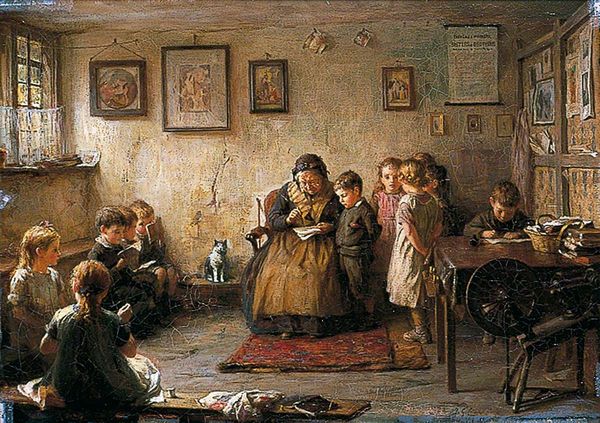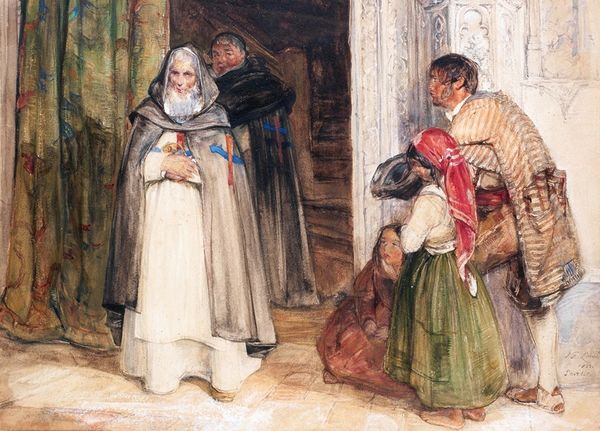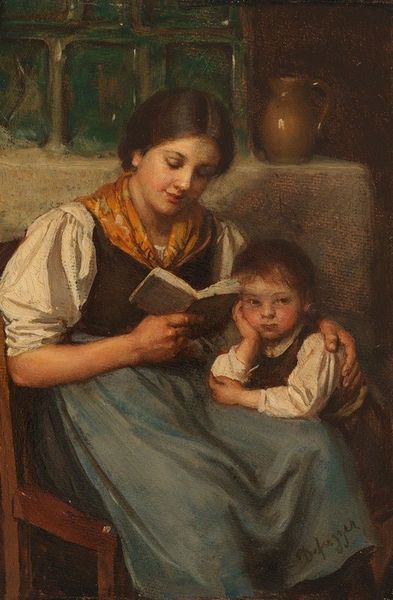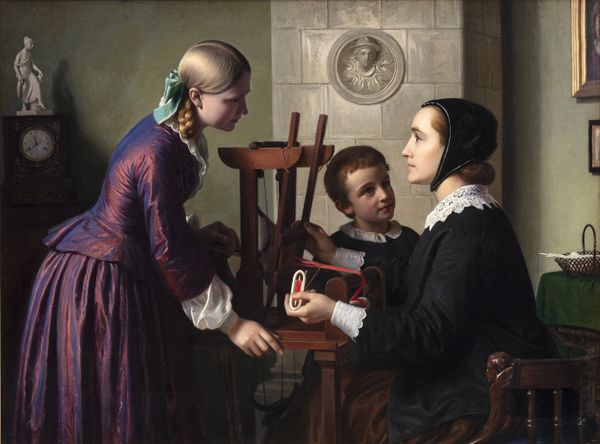
painting, oil-paint
#
figurative
#
painting
#
oil-paint
#
oil painting
#
genre-painting
#
history-painting
#
realism
Copyright: Public Domain: Artvee
Curator: What strikes you first about Albrecht Anker's 1890 painting, "Die Kinderkrippe I", depicting a nursery or crèche? Editor: Well, honestly, the overwhelming impression is order… or maybe, a sort of forced calm. It’s a room teeming with kids, yet they’re all so eerily still, each caught in their own little orbit of spoon and plate. Curator: It’s interesting you say that. Anker was a master of genre painting, often focusing on the daily lives of Swiss villagers. He was exceptionally attuned to conveying communal values through scenes like this, embedding the social choreography within seemingly simple settings. Look closely, and notice how mealtime functions almost as a ritual here. Editor: Yes, there’s definitely something of a staged quality. Like a perfectly paused moment in a play. But what about that underlying current of unease? Is it just my overactive imagination at work here? Curator: Consider how childhood was depicted at the time. Artists often idealized children, casting them as symbols of innocence. Anker, though, presents a more realistic, almost anthropological view of childhood in a specific historical setting. Notice the children's attire, the details of the room. All elements carefully chosen. Editor: The nanny or caregiver, isn't she something else? The starched white bonnet framing her face seems to broadcast both severity and perhaps a flicker of weary kindness, with those piercing eyes she seems to understand things we may never perceive. Almost like an icon herself… a secular Madonna tending to her flock. Curator: That’s a perceptive reading. Clothing in 19th century paintings conveyed complex meanings. The nanny's attire symbolizes order, diligence, and care, fitting in this landscape of duty and responsibility. Beyond simple representation, garments speak volumes about social structure and historical context. Editor: Maybe the source of my discomfort is precisely this sense of things being meticulously ‘structured,’ each child positioned and poised. There is an absence of genuine childlike joy that strikes me as slightly haunting. It seems this artist gives precedence to capturing collective responsibility, and history. Curator: Ultimately, it’s in the layering of such tensions that this artwork yields enduring power. Editor: Right you are. Well, I shall now look at early childhood portraits with completely new eyes. It's food for thought.
Comments
No comments
Be the first to comment and join the conversation on the ultimate creative platform.
